KIEV (continued)

|
KIEV (continued) |
 |
At the request of Action for Post-Soviet Jewry, I visited Arkady and Evgenia Rosenberg, an elderly couple who had managed to succeed economically until tragedy struck. Their son Simon had been in an accident and was still hospitalized at the time of the visit. In addition, both Arkady and Evgenia had fallen and broken their hips. Arkady was recovering and walking with walker but it appeared that Evgenia would be permanently disabled. I gave them cash and a tape of Rosalie’s music.
 |
|
Paul and Vitaly visiting Arkady and Evgenia Rosenberg in their apartment in Kiev |
Vitaly had arranged for me to meet David Budnik, the last survivor of the atrocities at Babi Yar. Babi Yar is located in a suburb of Kiev and is the site of the mass murder of 33,751 Jews from Kiev, who were killed over a two-day period. Mr. Budnik had written a book about his experiences.
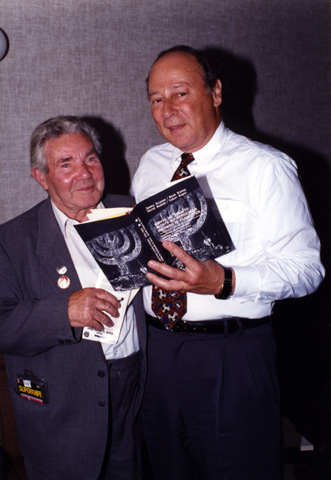 |
|
David Budnik, the last survivor of Babi Yar, presented Paul with a copy of his book describing his experiences. |
Click here for more information on Babi Yar.
Reading David Budnik’s book and touring Babi Yar was perhaps the most emotionally draining part of an already emotionally overwhelming trip. In the Passover sedar we are commanded to feel as though we personally were liberated from slavery in Egypt. In Babi Yar, I began to feel as if I had personally witnessed the slaughter. I felt like I was walking on the spirits of the people who were killed there.
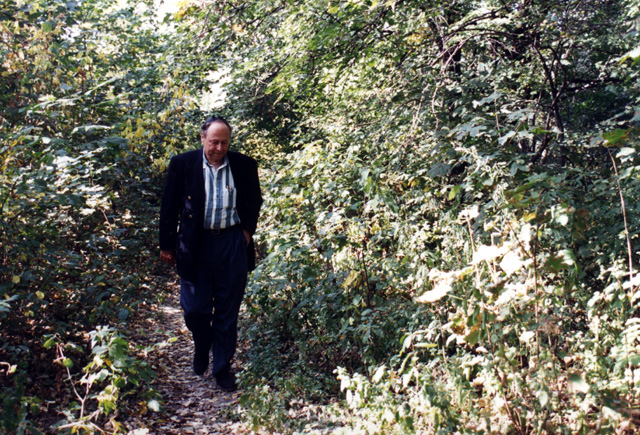 |
|
Paul walking in the woods near Babi Yar, stepping quite possibly on soil permeated with the ashes of the people murdered there. |
To heighten my despair, I saw that the Soviets has placed buildings atop the old Jewish cemetery and the ground where the burnt remains of those murdered in Babi Yar had been scattered. The city planners had shown a complete lack of respect for Jewish sensibilities. Before the war, the cemetery had been in use for hundreds of years, and was quite full. The Soviets built a television station, soccer stadium, and factory atop it.
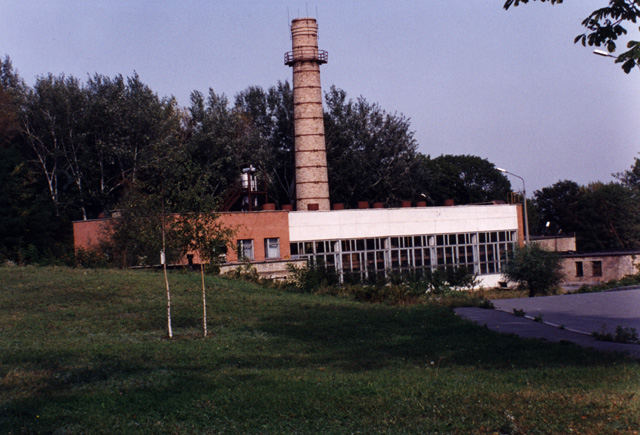 |
|
TV station built on top of the old Jewish cemetery at Babi Yar (above). Part of the cemetery was turned into space for a soccer field and factory (below). |
 |
The insensitivity was mind-boggling. A small section of the cemetery still remains but most of the headstones are missing or damaged, and construction of new buildings continues.
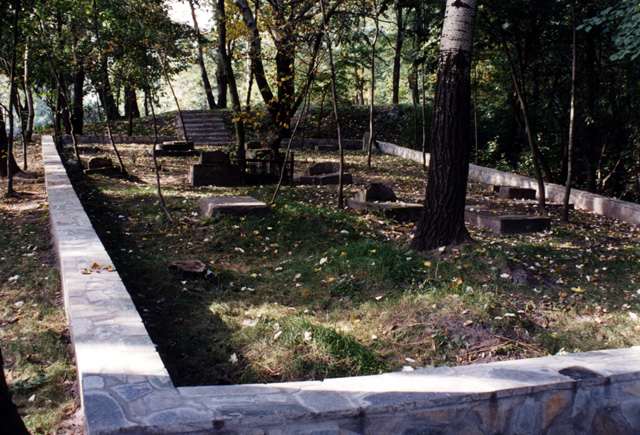 |
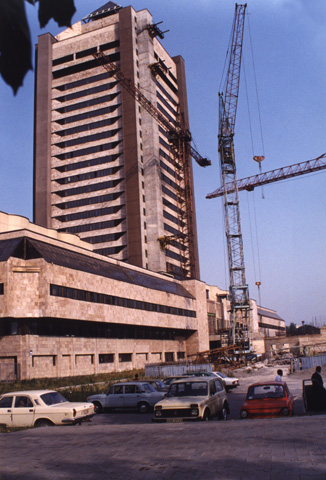 |
|
The remnants of the old Jewish cemetery (left) |
|
|
|
|
The view of the Jewish memorial as Babi Yar is marred by the presence of the TV tower behind it. |
Baruch and I figured that the attitude toward war monuments would be the same in Poland as in Ukraine, as the Polish people had also been deemed sub-humans by the Nazis and targeted for extermination. According to information provided by the United States Holocaust Memorial Museum web site: *
“…millions of Poles—Jews and Catholic alike—were murdered by the SS and police personnel in the field or in killing centers such as Auschwitz-Birkenau and Treblinka. In the ideology of the Nazis, the Poles were considered an inferior ‘race.’ The Germans intended to murder members of the political, cultural and military elite and reduce the remainder of the Polish population to the status of a vast pool of labor for the so-called German master race. It is estimated that between 5 and 5.5 million Polish civilians, including 3 million Polish Jews, died or were killed under Nazi occupation. This figure excludes Polish civilians and military personnel who were killed in military or partisan operations. They number 664,000.”
Nevertheless, the cover up of the unique nature of the Jewish genocide in Poland, as well as in Ukraine, felt like another form of annihilation. Where the Nazis had succeeded in killing millions of Jews during the Holocaust, it seemed like the Ukrainians and Poles were finishing the job by annihilating the memory of Jewish martyrdom and the memory of Jewish existence in these lands for the millennium before the Holocaust.
* “Frequently Asked Questions: How many Catholics were killed during the Holocaust,” United States Holocaust Memorial Museum, <online> http://www.ushmm.org/research/library/index.utp?content=faq/right.htm> Data downloaded 12 May 2004.